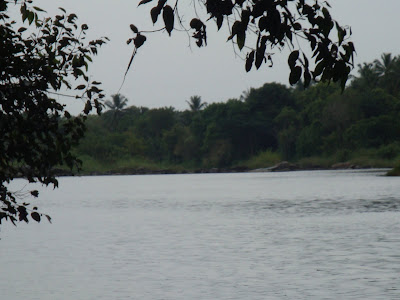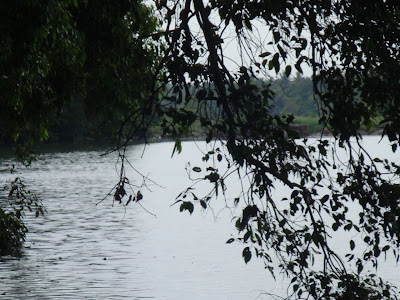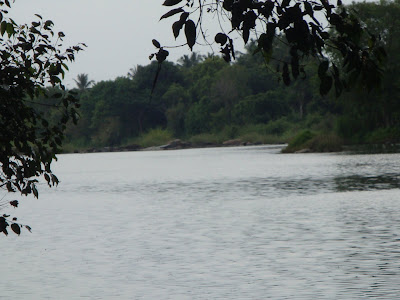Cauvery river is the most sacred and famous river in state of Karnataka, India. Its source (Talacauvery) is in the district of Madikeri.
Distance From Bengaluru: Approximately 100+ kms.
What's Special: Most famous river in the indian state of Karnataka. The delta formed from the tributaries of river Cauvery is well known as the "Garden of South India". The length of the river is approximately 750 kms and there are some very special resorts and fishing camps on the banks of this river which provide various water sports, fishing experiences and other adventure sports.
Mode of Transport: Buses, Trains and any private mode of transport by road.
Near By Places: Madikeri, Mysore, Srirangapatna.





Distance From Bengaluru: Approximately 100+ kms.
What's Special: Most famous river in the indian state of Karnataka. The delta formed from the tributaries of river Cauvery is well known as the "Garden of South India". The length of the river is approximately 750 kms and there are some very special resorts and fishing camps on the banks of this river which provide various water sports, fishing experiences and other adventure sports.
Mode of Transport: Buses, Trains and any private mode of transport by road.
Near By Places: Madikeri, Mysore, Srirangapatna.
The Cauvery River is one of the major rivers in India, and it is also known as the Dakshina Ganga, which means the Ganges of the South. It is a significant river in South India, which originates from the Western Ghats in Karnataka and flows through Tamil Nadu and Kerala, before finally draining into the Bay of Bengal. The river is a source of life for the people of the region, and it has played a significant role in shaping the culture, history, and economy of the region. In this blog, we will explore the history, geography, significance, and challenges faced by the Cauvery River.
Geography
The Cauvery River originates from the Brahmagiri Hills of the Western Ghats in Karnataka, at an elevation of 1,341 meters above sea level. It flows through Karnataka, Tamil Nadu, and Kerala, covering a distance of around 800 km before draining into the Bay of Bengal. The river is one of the largest river basins in India, with a catchment area of 81,155 sq. km, of which 44,000 sq. km is in Karnataka, 32,000 sq. km is in Tamil Nadu, and the rest is in Kerala.
Significance
The Cauvery River is of immense significance to the people of the region. It is the lifeline of the people, and it supports a diverse range of ecosystems, including forests, wetlands, and agricultural lands. The river basin is also home to several species of flora and fauna, including several endemic species.
The river is also a significant source of water for irrigation, hydropower generation, and drinking water supply. The Cauvery River basin is one of the most agriculturally productive regions in India, with several crops such as rice, sugarcane, and banana being cultivated in the region. The river also supports several industries, including the textile industry, paper mills, and chemical industries.
History
The history of the Cauvery River is deeply intertwined with the history of the region. The river has played a significant role in shaping the culture, economy, and society of the region. The river was mentioned in ancient Hindu texts, including the Ramayana and the Mahabharata. The river basin was also home to several ancient kingdoms, including the Chola, Pandya, and Hoysala kingdoms.
The river was also an important trade route, and it was used for transportation of goods between the coastal regions and the interior regions of the country. The river was also an important pilgrimage site, and several temples and shrines were built on its banks.
Challenges
The Cauvery River faces several challenges, including water scarcity, pollution, and interstate disputes. The river is a victim of over-exploitation, with several dams and reservoirs built along its course. The construction of dams has reduced the flow of water downstream, affecting the livelihoods of the people dependent on the river.
The river also faces pollution from several sources, including industrial effluents, agricultural runoffs, and domestic sewage. The pollution has affected the quality of water, and it has led to several health hazards.
Interstate disputes over the sharing of water have also been a significant challenge for the Cauvery River. Karnataka and Tamil Nadu have been engaged in a long-standing dispute over the sharing of water from the river. The dispute has led to several protests, violence, and legal battles.
Conclusion
The Cauvery River is a significant river in India, and it has played a vital role in shaping the history, culture, and economy of the region. The river is the lifeline of the people, and it supports a diverse range of ecosystems. However, the river also faces several challenges, including water scarcity, pollution, and interstate disputes.
i have been to bandipur resorts last weekend its an
ReplyDeleteamaizing place to spend ur time,there is kgudi resorts
near next week we are planing to visit over there